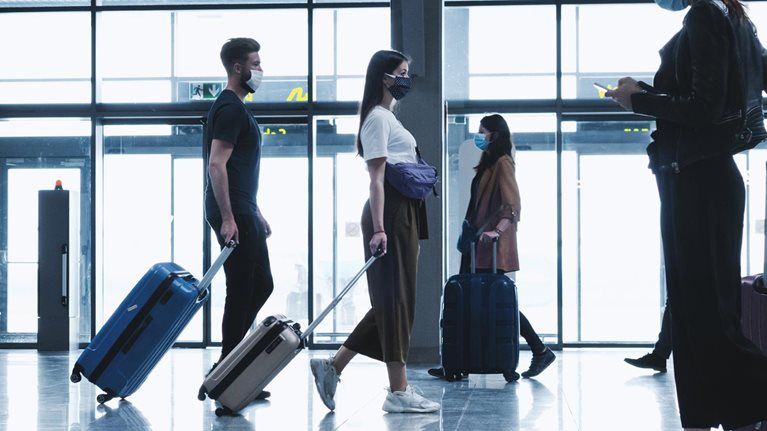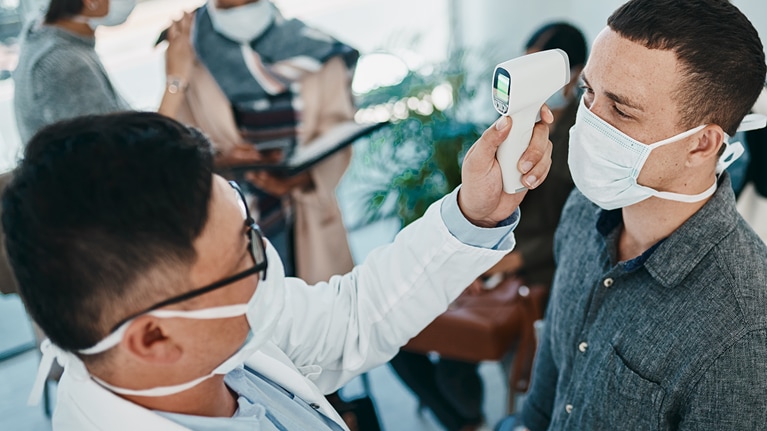The 2010s were Spanish tourism’s moment in the sun. In 2019, three of Europe’s top-five tourist destinations were Spanish (nights spent at tourist accommodations), and the country’s tourism sector was worth $200 billion, or 14.3 percent of the national GDP.
With the COVID-19 pandemic, the clouds have rolled in and could be here to stay for at least the next few years. Our forecast suggests that by the time the sector recovers, Spain may have amassed cumulative GDP losses of $300 billion, and up to 4.4 million jobs might be eliminated. With this much at stake, stakeholders in Spain’s tourism industry may not be able to afford to wait for the storm to pass.
This article takes stock of COVID-19’s impact on Spain’s tourism sector and suggests steps that travel companies and public-sector stakeholders can take to catalyze recovery. Indeed, many positive signs point to tourism bouncing back when COVID-19 protocols ease. And while it’s impossible to predict with certainty when that would happen, there are many things industry players could be doing now.
Businesses could step up their digitalization efforts while exploring more cross-sector collaborations. Local governments could become a more proactive player in tourism management, employing measures to promote destination appeal, fostering cross-sector collaborations, and reskilling and retraining the travel workforce. While discussions around some of these ideas predate the pandemic, the time for implementation may have finally come.
COVID-19’s impact on Spain’s travel industry
Even though the effects of the pandemic are far from over, a number of insights are emerging. If current trends hold, it will take years for Spain’s travel sector to fully recover, and the economic devastation that has hit the sector the hardest would trickle down to the rest of the economy. This would also be a time of transformation for the industry. When tourism returns (and with a vengeance, we expect) the profile of Spain’s tourism industry will likely have changed structurally as the country emerges from the crisis, with segments such as MICE (meetings, incentives, conferences, and exhibitions) and group travel activities becoming less central.
1. Full recovery could take years
We project that domestic tourism in Spain might not return to prepandemic levels until 2024, and inbound international tourism by 2025, if recovery is muted by recurrent bouts of the virus that hold back economic growth in the near term (Exhibit 1). Based on analysis from our colleagues, this “A1” scenario is cited in surveys of business executives as most likely to happen.

Five factors will determine how fast Spain’s tourism sector could recover:
- Attractiveness of domestic destinations: The more innately attractive a destination is, the more likely it is to draw domestic travelers from other parts of the country at a rate that could make up for the loss in international tourism. Regions such as Catalonia, the Balearic Islands, and Andalusia are tourist magnets. According to the World Economic Forum, Spain ranks among the top three countries in the world for natural and cultural resources.
- Availability of air transport: Destinations that require travelers to hop on a plane to reach them will feel the economic impact of the pandemic more acutely as a result of health-safety concerns and air-travel restrictions. Some of the most famous Spanish tourist destinations depend heavily on air transport, and air travel accounted for 82 percent of all of Spain’s inbound trips in 2019.
- Health and hygiene: Health and hygiene standards, along with the personal health and travel insurance policies of the individual, affect where travelers choose to visit. In this regard, Spain lags behind other countries. Take medical infrastructure as an example: Spain has 30 hospital beds per 10,000 residents, far fewer than other countries such as France (65 beds), Germany (83 beds), or Japan (134 beds).
- Importance of business travel: Since business travel will take longer to recover, Spanish cities and destinations with a greater reliance on corporate travel will be more seriously affected over the medium term. In Spain, business travelers make up 17 percent of domestic-travel expenditure, which is much higher than in many other countries; in the case of Spain’s neighbor Portugal, for example, only 7 percent of domestic-travel expenditure comes from business travelers.
- Sustainability: Travelers are increasingly conscious about the size of their carbon footprint when they travel and may base their travel decisions on environmental issues. According to the Yale Center for Environmental Law & Policy, Spain’s environmental performance index ranks 14th internationally.
Even though the Spanish tourism sector saw its deep freeze begin to thaw immediately after lockdowns were lifted in 2020, its relatively weak performance in a number of the above factors is leading to a prolonged period of recovery at a devastating cost to the economy.
2. Damage to Spain’s travel industry will ripple across other sectors in the economy
Tourism is particularly important for Spain’s economy—and its people. It accounts for 14.6 percent of total jobs in the country, if direct, indirect, and induced effects are factored in. Individual regions that depend on tourism are even more adversely affected. In places such as Andalusia, the Balearic Islands, the Canary Islands, Catalonia, and the Valencian Community, tourism represents more than 20 percent of the local GDP and more than 20 percent of jobs (Exhibit 2). These areas are also highly dependent on international tourism.

To make matters even more complex, the industry is highly fragmented and made up of many small, family-owned companies. Travel entrepreneurs and start-ups contribute significantly to the development and sustainability of areas and cities beyond the industrialized areas and the major cities. In 2019, tourism companies with less than €1 million ($1.2 million) in revenues accounted for 15 percent of the total sector revenues. This figure is around 4 percent for the rest of the sectors in the country. Without further government support or external intervention, these small enterprises may not survive the pandemic.
While the pandemic’s impact on Spain’s tourism industry was especially severe as a result of measures put in place to control the spread of the virus—including lockdowns, curfews, airline-capacity reductions, physical distancing, and restrictions on the use of space within hotels, restaurants, and bars—the economic devastation is also deeply felt by other sectors of the economy.
Take the real-estate and finance sectors. As the number of tourists dwindle, hotels and tourist attractions aren’t the only businesses feeling the brunt; countless other small businesses that rely on healthy foot traffic to stay afloat, such as malls, restaurants, and retailers, feel it as well. As their revenue streams dry up, many small-business owners may not be able to fulfill their financial obligations and could default on loans. Similarly, people who took out mortgages to buy a second home to lease out for short-term rentals may default as well. If this happens on a large enough scale, the resulting economic fallout could deliver a serious blow to the financial sector.
In aggregate, we estimate that between 2020 and 2024, Spain could lose 4.4 million jobs and forfeit $300 billion of GDP (equivalent to 22 percent of 2019 GDP levels), considering both direct as well as indirect and induced effects.
3. Since COVID-19’s impact varies across different tourism segments, the profile of Spanish tourism is undergoing a structural overhaul
The profile of the Spanish tourism sector is changing significantly, and recovery won’t be even across segments. Spain’s tourism industry is a mosaic of different segments, such as group travel, individual business travel, and sun and beach travel, to name just a few. We scored more than a dozen segments’ dependence against indicators under four broad categories—trip to destination, experience at destination, mandated changes in habits, and reliance on international travel—to assess how vulnerable each of these segments is. The higher the overall score, the longer recovery will take.
Our analysis suggests that MICE, group travel, cruise, individual business, and urban segments will be the most affected by the pandemic and will take longer to recover. As more employees get used to remote working and companies look to minimize business-travel expenses, some highly affected segments such as business-related air travel and MICE-related travel may not fully recover to prepandemic levels. On the other hand, second-home tourism, ecotourism, and religious, sport, and culture tourism will be less affected and should recover faster (Exhibit 3).

The most vulnerable segments (MICE, group travel, cruise, individual business, urban, and sun and beach) also make up the bulk of Spain’s tourism GDP (Exhibit 4). We can likely expect significant changes in the composition and nature of tourism activity over the next several years. Companies in vulnerable segments such as trade shows or MICE events may have to reimagine their business models entirely, while others may need to undergo significant restructuring to optimize operations and processes. We will likely see small players that are struggling with liquidity consolidate their resources and merge.

Accelerating the recovery of Spain’s travel sector
As travel players cast their eyes further on the horizon, they will have to grapple with the trends outlined in this article, while taking into account other forces that have been accelerated by the pandemic, such as automation. Our recent report The future of work after COVID-19 indicates that Spain’s travel sector will likely see greater transformation both during and after the pandemic.
The sobering trends outlined above belie the fact that Spain has many key advantages that the tourism sector can capitalize on to thrive amid turbulent times. Government stakeholders and travel companies could proactively work together on three high-priority areas to turn the tide and hasten the sector’s recovery. Measures should be assessed for their return on investment, factoring in the direct economic return, indirect and induced effects, and the sustainability of the jobs created.
1. Double down on competitiveness
Travel companies will need to become much more efficient in their operations, not only by launching more “traditional” cost transformations but also by increasing their focus on productivity and competitiveness. COVID-19 has pushed many travelers to explore alternative destinations, and competition will increase as a result. Companies will also need to become much more agile to be able to react more quickly to changes in demand and to innovate how they interact with customers.
Digitalization of the sector has been a hot topic over the past decade, but the pandemic has compelled many travel companies to step up their efforts in this area much more so in the past year than in the previous five years. The pandemic may have brought on great economic devastation, but massive stimulus is also available. Companies could build and increase momentum with help from local governments, which are seeking to catalyze further digitalization. The Spanish government is pledging €5 billion in digital funding for small and medium-size enterprises through the “Plan de Digitalización de Pymes 2021–2025.” Meanwhile, the recently launched NextGenerationEU requires projects to meet digital and sustainability requirements to be eligible. Travel companies would be wise to take advantage of the slew of incentives, such as tax benefits for digital initiatives.
Digitalization in Spain’s tourism sector could focus on two broad priorities: hygiene and operations. Mobile apps and digital vaccine passports could be used for contact tracing to help boost traveler confidence and make it easier to contain potential new outbreaks. Promoting the widespread use of contactless transactions to minimize close physical interaction could also enhance traveler safety.
Companies could equip themselves with the IT infrastructure to benefit from advanced analytics and the digitalization of back-end processes to track and forecast traveler behavior and preferences at a more granular level, detecting and predicting microbubbles of demand and emerging trends. For instance, as “work from anywhere” arrangements become more common, travel companies in Spain could market destinations as attractive places to work remotely. Revenue-management systems could be sped up and made more efficient.
2. Innovate collaboratively across organizations and sectors
The crisis has also precipitated the innovation of new revenue streams by monetizing novel experiences through promotions and packages. Travel companies that explore more cross-sector collaborations on the following themes could further open up new revenue streams and transform vulnerable tourism segments such as MICE events and business travel.
- Identify and meet new pockets of demand: Travel companies can work with businesses in other sectors to identify new tourist segments with unique demands and create products to cater to them. For instance, hotels could partner with hospitals to offer healthcare workers rest-and-relaxation packages, and MICE venues could be converted to remote-education facilities to host “schoolcations.” Also, hotel parking lots could provide charging stations to meet the needs of the growing number of electric car owners—both guests and other urban drivers. Some hotels have revisited their pricing structures to allow for more flexibility—for example, by offering day passes, home-office packages, or even long-term stays to accommodate an increasing number of remote workers. These initiatives may start off as low-risk and low-investment tactical experiments, but they could serve as potential openings for companies in vulnerable segments to break into new markets and reimagine their business models.
- Pooling resources to improve flexibility: Collaboration among companies is also a way to reduce labor costs while alleviating bottlenecks. For instance, quick-service restaurants that are able to staff only drive-throughs (when dining inside restaurants is restricted) could redeploy their servers to grocery retailers that need additional workers. In some countries, flight attendants were retrained to provide support in short-staffed hospitals. Hotels could look at similar partnerships, both within the sector and beyond.
3. Build a ‘tourism reimagination task force’ to play a more active role in tourism management
The most resilient tourism segments are those that are closely linked to the respective region’s inherent appeal and unique characteristics. Aside from providing financial assistance to the sector, government agencies could take on a more active role in tourism management by partnering with businesses to increase the attractiveness of tourist destinations while maintaining high hygiene and safety standards.
There are several examples of this in other parts of the world. For instance, Chinese policy makers have supported local retailers by creating duty-free shopping zones to incentivize domestic tourists to shop. Other partnerships may provide a blueprint for longer-term policy management. In Spain, many smaller or rural destinations are becoming more popular, but the local destination-management organizations (DMOs) lack sufficient budgets and capacity to capitalize on this trend and to communicate the unique traits of their respective regions to draw in significant tourist flows.
A collaboration across regional DMOs through tourism clusters could be a solution. A successful case can be found in Germany’s Schleswig-Holstein region, where multiple levels of government agencies and local tourism companies formed a “cluster” to foster close central collaboration and launch joint initiatives (for example, on sustainability practices) that no player could afford individually. Another case is the Wellness Cluster Tirol, in Austria, where more than 120 companies from tourism- and health-related businesses contribute to the shared mission of increasing the region’s value proposition in health and wellness tourism. Such partnerships could not only strengthen DMOs in new growth areas but also support small and medium-size travel businesses.
In Spain’s case, the country’s travel sector could prepare to meet the pent-up demand for tourism by revisiting its tourism segments to identify positions of strength to leverage. For instance, second-home, culture, and adventure tourism are expected to recover faster than most others. As consumer personal savings are at an all-time high among those still employed, it may make sense for stakeholders to collaborate and develop premium travel experiences across the Iberic peninsula targeted at millennials eager to embark on their next adventure after being grounded for so long.
Effective coordination is key to successful collaboration, whether it’s among government agencies from different regions, among businesses, or among the public and private sectors. Concentrating crucial leadership into a “tourism reimagination task force” is a crisis-management response that many organizations have deployed in similar situations (Exhibit 5).1 This reimagination task force, which brings together public, private, and semiprivate players into project teams to address five core priorities, could provide a collaboration framework that is particularly suited to the diverse stakeholders within the tourism sector.

Given the uncertainty surrounding the timing and speed of the tourism recovery, obtaining quick feedback and redeploying funds accordingly will be critical to ensuring that stimulus packages have the maximum impact. The tourism reimagination task force coordinates the five teams to ensure agile decision making and the alignment of activities with expected output.
As they say in Spain, “Camaron que se duerme se lo lleva la corriente,” or, in English, “The shrimp that sleeps gets carried away by the current.” In other words, companies that sit by and do nothing as they wait for the organic recovery of the sector may find themselves unable to outlast the pandemic. There’s optimism in this saying, too. Companies that take the proactive steps outlined in this article may find themselves riding the currents of unpredictability toward greater success.


